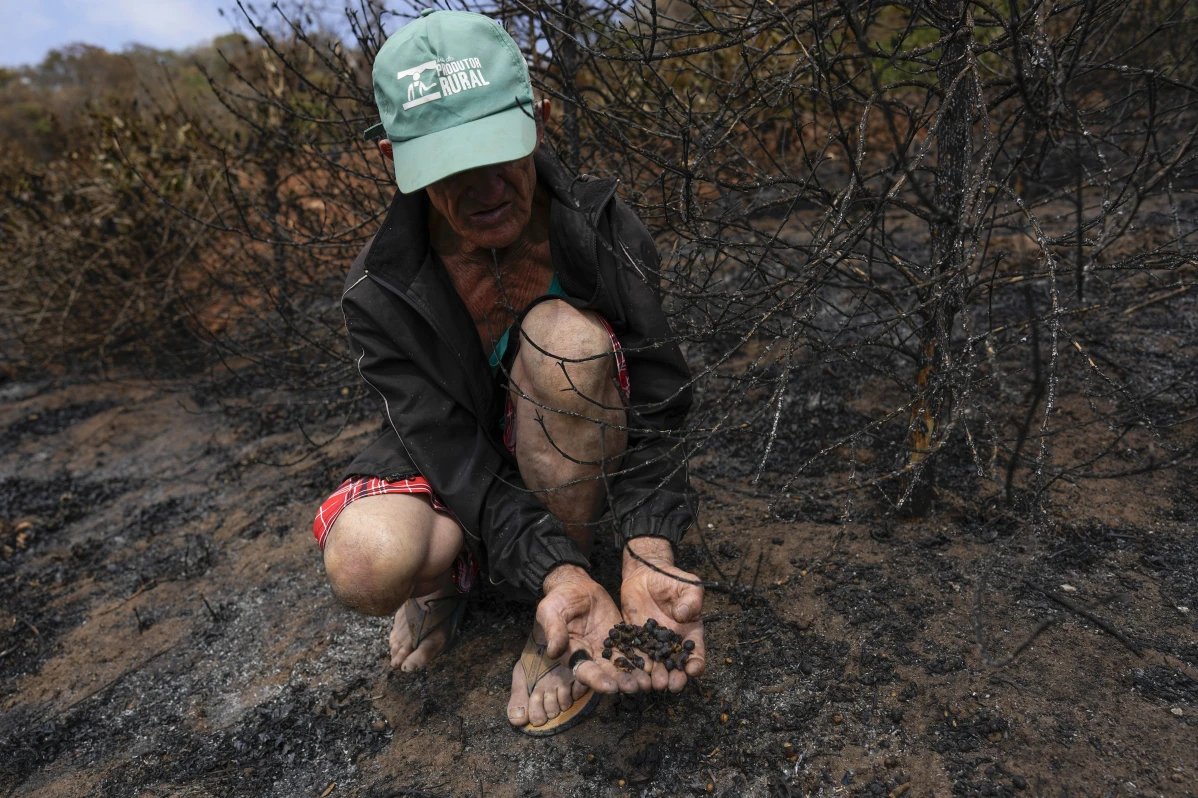Month in Review: global drought conditions
Holly Sealover, October 2024 for JOUR 3330: Editing
Impacts of the ongoing drought have been felt across the world, including a worsening hunger crisis in southern Africa, an Amazon River tributary’s record-low water levels, an endangered coffee harvest in Brazil, deadly wildfires in western North Dakota and early pawpaw fruit harvests.
The “Month in Review” compiles photos and stories from the Associated Press website that were published Sept. 18 - Oct. 15, 2024.
Southern Africa experiences its worst hunger crisis in decades due to drought
The World Food Program estimates that about 21 million children in southern Africa are now malnourished as crops have failed and water is limited. Lesotho, Malawi, Namibia, Zambia and Zimbabwe have declared national disasters due to drought conditions and the resultant hunger. A woman collects water from a hole she dug in a dried riverbed in Lusitu, Zambia, on Sept. 18 due to limited water supply.
Severe drought has dried a major Amazon River tributary to record-low levels
The Negro River, one of the Amazon River’s main tributaries, has dropped to its lowest level ever recorded. Dock worker Francisco Ferreira Pinheiro reads a meter stick measuring the Negro River’s water levels at the port in Manaus, Amazonas state, Brazil, on Oct. 4. Severe drought conditions have made shipping, bathing, collecting drinking water and working on boats increasingly difficult.
Drought conditions and wildfires in Brazil threaten coffee harvest
Brazil, the world’s largest producer of coffee, is facing the nation’s worst drought in more than 70 years and higher than average temperatures. The lack of rainfall combined with aggressive wildfires have damaged crops. In rural Caconde, Sao Paulo state, Brazil, coffee producer Joao Rodrigues Martins holds a handful of damaged coffee beans during a Sept. 18 inspection of his plantation, which was consumed by wildfires.
Wildfires in western North Dakota leave one dead and large areas burned
Wildfires spread through parts of western North Dakota in early October, leaving one person dead and more than 100 people evacuated from their homes. North Dakota National Guard soldiers and airmen worked with the Department of Emergency Services to build a handline and conduct a controlled burn to prevent the further spread of a wildfire in Mandaree, North Dakota. High windspeeds and dry weather contributed to the fires.
Shifting weather patterns and extreme drought affect North America’s largest native fruit
Pawpaw growers in Ohio and Kentucky have reported early harvests this year, possibly due to the area’s changing weather conditions. Heavy rains in 2018 and 2019, last year’s spring freezes and this year’s drought have put stress on pawpaw trees across the region. Valerie Libbey holds a normal-sized pawpaw, left, next to a drought-affected pawpaw from her farm in Washington Courthouse, Ohio, on Sept 18.





